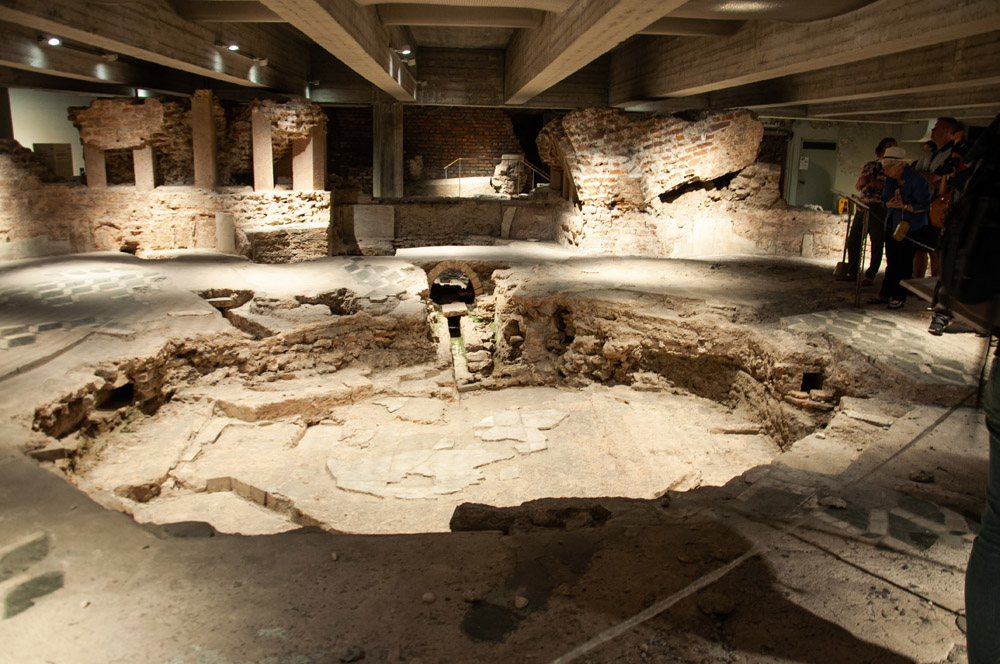

The Stavelot Reliquary: Detail, the baptism of Constantine
Circa 1156
Champlevé and cloisonné on copper gilt
Morgan Library, New York
The medallions of inner face of the left panel illustrate the story of the Emperor Constantine, while those on the right are based on the legend of his mother's discovery of the "True Cross." The segment shown here is at the top on the left. Pope Eusebius pours water over the head of Constantine, who stands in a baptismal font. The inscriptions read (left to right) eusebius papa, constantinus, ministri ("Pope Eusebius, Constantine, the ministers"). Eusebius was pope for only four months in the year 310.

The details in the image reflect liturgical practice in the 12th century, when the reliquary was created, rather than the 4th, when these events are said to have taken place. Constantine stands in a narrow octagonal font, whereas converts in the 4th century were baptized by immersion in spacious pools (Figure 1). The shape of the bishop's mitre is also specific to the 12th century; in the 4th century there was no special liturgical headgear. Only the arches in the background reflect paleo-Christian iconography.
The triple arch in the background echoes the arches in the bottom medallion, where Constantine is seen sleeping in his palace.
View the entire reliquary.
Read more about the history and symbolism of the mitre.
Source: this page at Wikimedia Commons.